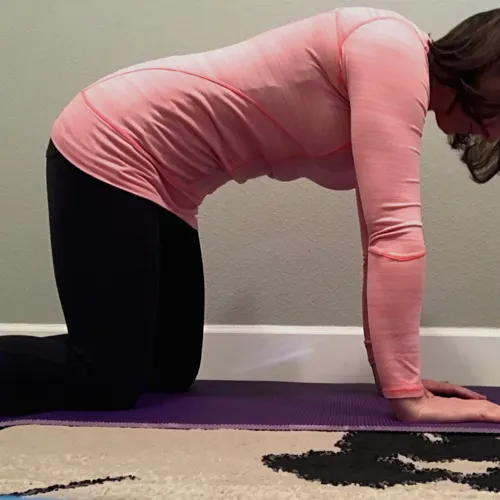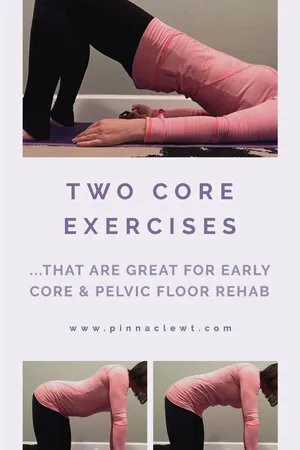At the time I write this, most of our country is in a state of hibernation thanks to the COVID-19 pandemic. Gyms are closed and most of us are left with much fewer options for exercise.
We can get outside to run, walk, bike, and we can exercise inside our homes.
Now is a GREAT time to work on some foundational exercises that we may not have had much time for. Building our strength from the inside out, is the ONLY way to do it. Those that skip the deep core muscles and go straight for the outside ones they can see, are doomed to struggle with chronic aches and pains from lack of a good foundation.
I have found that there are 4 main pillars of a healthy core and pelvic floor: 1) Breath, 2) Alignment, 3) Pelvic floor/core coordination, then strength, and 4) Hip strength.
The two I am showing you here are addressing 2 of the 4 major pillars of a healthy core and pelvic floor. Breath and hip strength. Pelvic floor/core coordination and strength can be invited to the party with these exercises later.
One reason that I like these exercises, is that they are in positions that do NOT add resistance or pressure down on the pelvic floor. So for those that are recovering from a pelvic organ prolapse or are experiencing a lot of weakness, these exercises should be safe and appropriate. Of course, this information should NEVER take the place of a full evaluation and recommendations from a pelvic health physical therapist and/or doctor.
Let’s start with Belly Breathing on hands and knees. It may LOOK simple, but it is QUITE challenging for many of my patients at first. As a culture, women are used to perpetually clenching their bellies in towards their spines.
Once in this position, we:
-
INHALE and let our belly DROP
-
EXHALE and LIFT our belly


All WITHOUT moving our back. In addition, I guide my clients to INHALE through their NOSE, and EXHALE through their mouth. I recommend doing this in groups of 10, focusing on ALLOWING our belly to FULLY RELAX with inhale and smoothly engage and lift to our spine with exhalation.
Only AFTER a person is able to breathe WELL in this position, do we progress with adding in pelvic floor muscle engagement and progressing the difficulty of the exercise for which there are many ways to progress this.
The second exercise is the BRIDGE. This exercise will be MOSTLY about HIP STRENGTH, but will also involve core strength as well. And again, pelvic floor muscles can be invited to this party as a way to progress it later on. I go through BOTH of these exercises in my exercise video in my digital course called Yoga, Core, & Pelvic Floor.
The primary bridge is done laying on our back, feet flat on the floor. Then I cue clients to:
-
INHALE to PREPARE
-
EXHALE to ROLL UP (squeezing the glutes) with the tailbone coming up first, followed by each lumbar vertebrae in order as if we are peeling the spine up.

Often, a person does NOT need to raise their hips up very high to get a great glute burn. The trick is to be sure we aren’t engaging a neighboring muscle group in place of the glutes. This could be the hamstrings or low back muscles (be sure to engage glutes just before you start to raise hips).
Also, slower movement can ensure we get to the point of feeling the muscle fatigue sooner. A person can also add resistance bands around their knees and press out against them to increase hip muscle fatigue. Sets of 10 is a good place to start.
Pelvic floor muscles can be “invited to the party” with both of these exercises once we have mastered the basic movements and we are SURE that pelvic floor muscles are not in a state of heightened tension where we are unable to fully release them.
This is where a movement assessment with a skilled pelvic and orthopedic PT is crucial. A person’s readiness for each level of these exercises depends on this assessment which can be done in person or virtually.
So if you find yourself with more time to do exercises in your home and would like to start to build a better core and pelvic floor foundation, then you can start with these two exercises. In general, strength exercises should be done 3 times a week as a rule for general health. If someone is recovering from an injury and in more of a rehab mode, strength exercises may be needed daily.
Add these to your exercise routine and let me know how they go!




